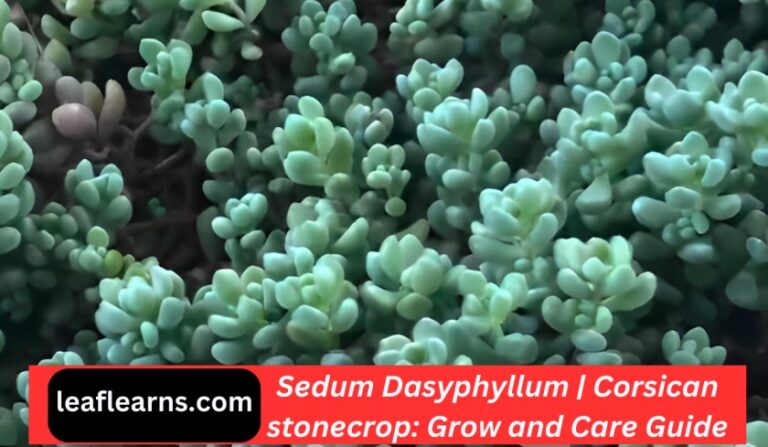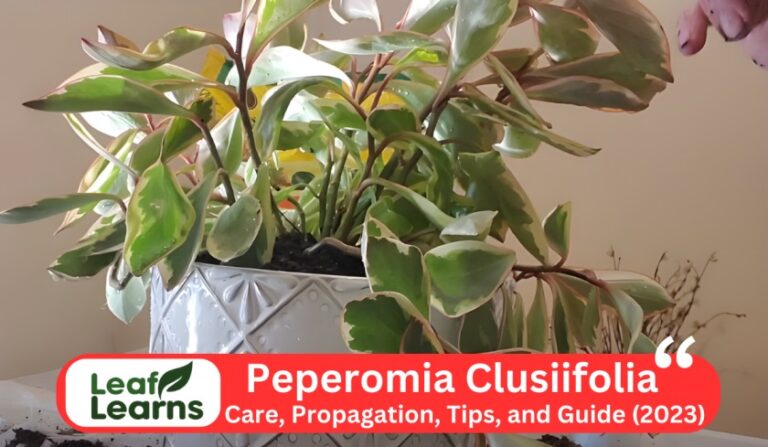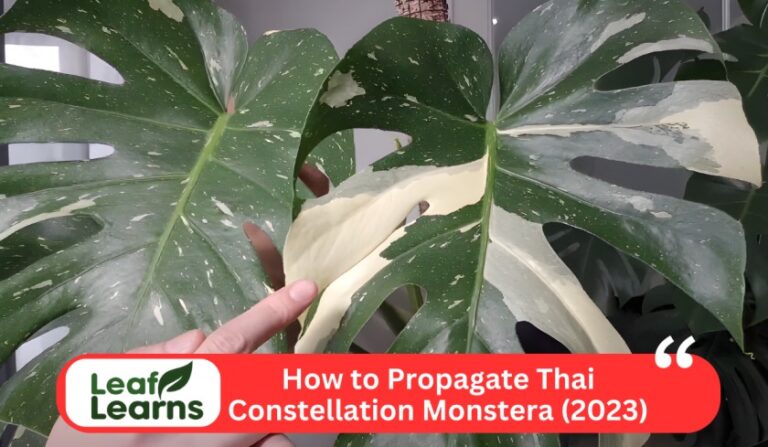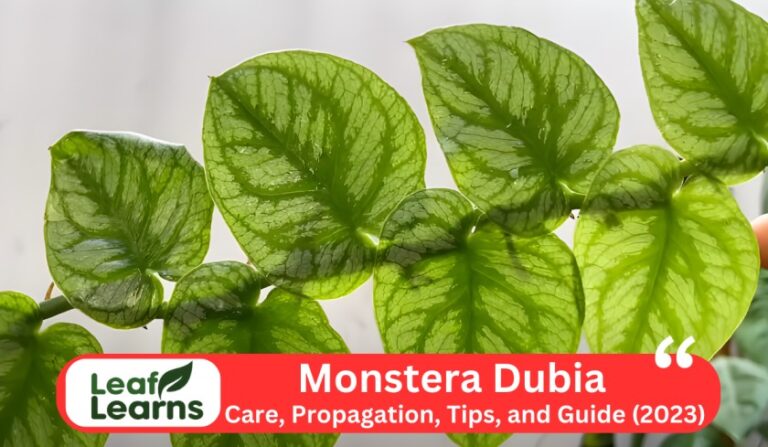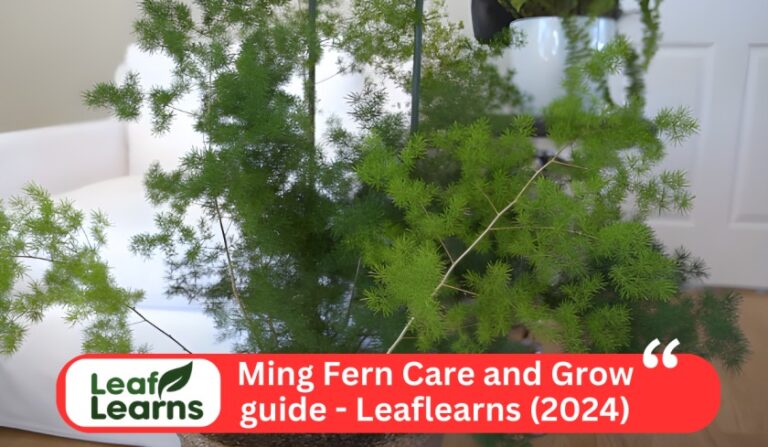Pilea depressa or Baby Tears Care, Grow, and Guide (2023)
Pilea depressa also called the Baby Tears plant. It belongs to the family Urticaceae. It is a lovely herbaceous perennial that originated in Central and South America. It gives a sense of beauty to your indoor garden with its pale, delicate leaves that are colorful and just 0.5 inches (1.3 cm) long. Baby Tears are a modest plant with simple greenish-white blooms that can be grown in bright, indirect sunshine.
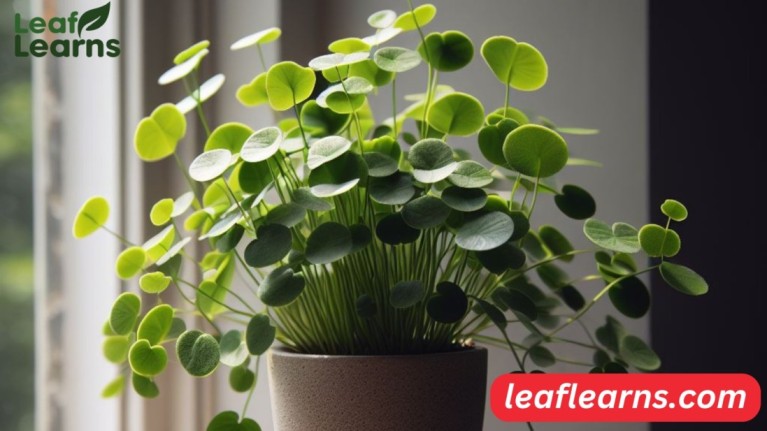
Contents
- 1 Characteristics
- 2 Top Care Tips
- 3 Care for Pilea depressa
- 4 Propagating Pilea depressa Or Baby Tears
- 5 How to Grow Baby Tears plant From Seed
- 6 Pruning
- 7 Repotting Pilea-depressa
- 8 How to Get Pilea-depressa to Bloom
- 9 Growth Rate and Size
- 10 Flowering and Foliage
- 11 Baby Tears plant Appearance
- 12 Overwintering
- 13 Common Pests
- 14 Plant Diseases
- 15 Problems and Solutions
- 16 Toxicity of Pilea–depressa
- 17 Varieties/Types
- 18 Uses of Baby Tears plant
- 19 Baby Tears plant Info Guide: Keeping Your Plants Healthy and Happy
- 20 Conclusion
- 21 FAQs
Characteristics
And also It can require little watering and just a little amount of soil drying between treatments. Maintain a temperature range of 65-75°F (18-24°C) and a degree of moderate to high humidity. While planting them in well-draining, loamy soil.
Simply push the plant back to promote broader growth, and during the growing season, don’t forget to feed with a balanced liquid fertilizer every 4-6 weeks. Stem cuttings are successful for propagation.
Particularly, Pilea depressa are not harmful to people, but it is essential to use caution when around pets because some varieties can be harmful to them. While mealybugs and spider mites should be kept out for, with proper care, your Baby Tears plant may grow more brilliantly.
| Common name | Baby Tears |
| Scientific Name | Pilea-depressa |
| Family | Urticaceae |
| Origin | Central and South America |
| Plant type | Herbaceous Perennial |
| Size | Up to 6 inches (15 cm) |
| Leaf Colour | Bright green |
| Leaf size | Tiny, approximately 0.5 inches (1.3 cm) |
| Flower Colour | Inconspicuous greenish-white flowers |
| Light | Bright, indirect sunlight |
| Water | Moderate, allow soil to dry slightly between waterings |
| Soil | Well-draining, loamy soil |
| Temperature | 65-75°F (18-24°C) |
| Humidity | Moderate to high humidity preferred |
| Fertilizer | Balanced liquid fertilizer every 4-6 weeks during the growing season |
| Pruning | Pinch back for bushier growth |
| Propagation | Easy through stem cuttings |
| Toxicity | Non-toxic to humans, but some variants may be toxic to pets |
| Pests | spider mites and mealybugs |
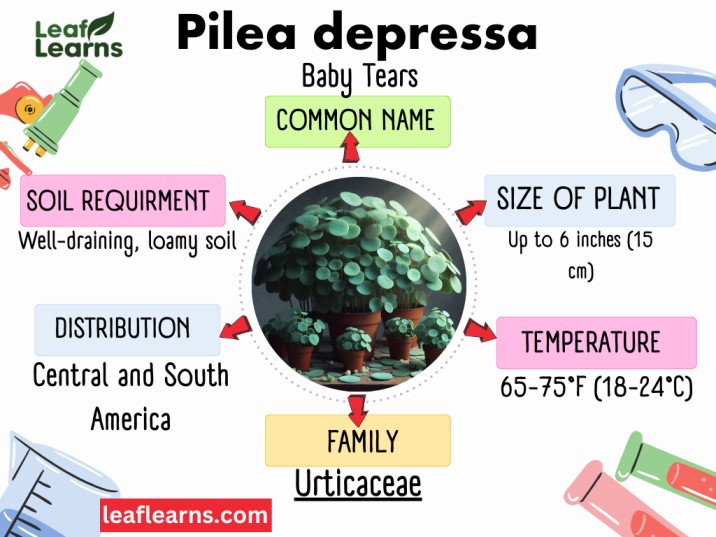
Top Care Tips
- The optimal lighting for Baby Tears plant is direct, bright sunshine. To prevent leaf burn, place it near filtered light and away from the sun.
- Keep the soil continuously wet but not saturated by watering moderately. If the top inch of soil seems dry, water it; do not overwater to avoid root rot.
- Using potting soil that drains effectively will help prevent soggy roots. Mixtures of succulents or indoor plants work well.
- Balanced Fertilization: For important nutrients in the spring and summer, feed with a balanced liquid fertilizer every 4-6 weeks.
- Trim stems and leggy growth to produce a fuller, more appealing look. Pruning for Bushier Growth.
Care for Pilea depressa
Light Requirement
When you are aware of your Pilea-depressa Or Baby Tears light requirements, maintenance is simple. This adorable plant thrives in direct, bright light. Place it close to a window with filtered light, but keep it out of the direct sun.
Your Baby Tears plant is the ideal addition to your indoor garden since it thrives in the correct lighting conditions, which keeps it healthy and looking its best.
Water Requirements
Watering is essential for Baby Tears maintenance. Maintain a constant moisture level in the soil that is not wet. Before watering, let the top inch of soil dry to avoid overhydrating it.
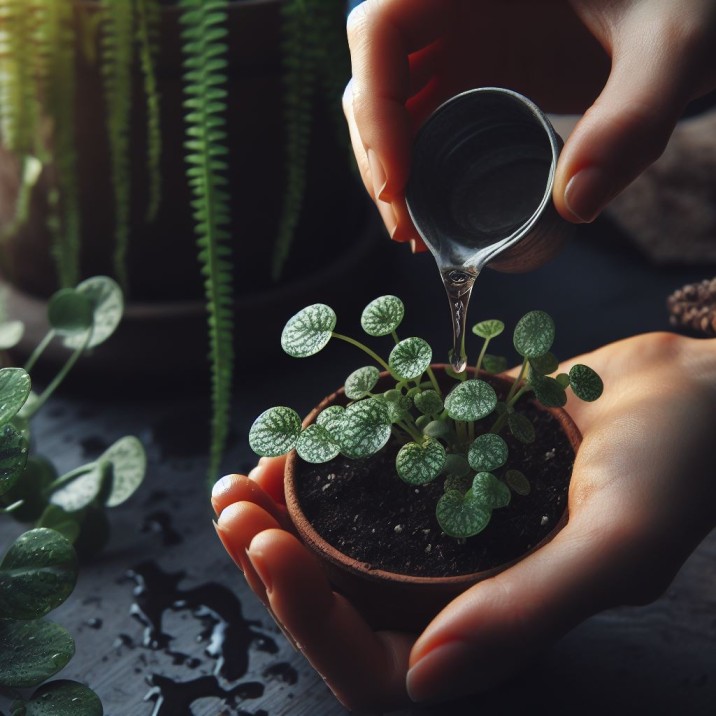
A healthy Baby Tears plant prevents root problems and maintains its lush attractiveness with proper water management. A healthy plant needs balanced watering, so keep that in mind.
Soil Requirement
Soil needs are essential for Baby Tears maintenance. Use soil that drains well and is intended for succulents or indoor plants.
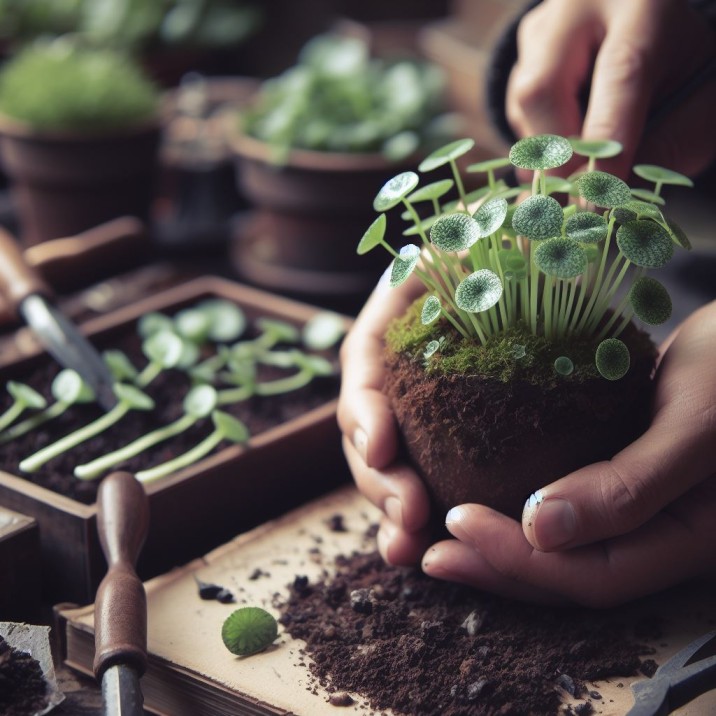
This avoids waterlogging by keeping water from accumulating around the roots. A healthy Pilea-depressa requires balanced soil moisture, therefore ensure sure the soil has adequate drainage to sustain ideal growth conditions.
Temperature Requirement
Maintain a suitable temperature range between 65 and 75°F (18 and 24°C) for optimal Baby Tears maintenance.
Make sure this tropical beauty isn’t exposed to chilly draughts or sharp temperature changes because it enjoys warmth.
Humidity Requirement
Baby Tears plant flourishes in conditions of moderate to high relative humidity. Make sure the climate is humid so that your plant will thrive.
This may be accomplished by periodically sprinkling the leaves or by setting up a tray of water nearby.
Fertilizer Requirement
Proper fertilizer is crucial for a healthy Baby Tears. Every four to six weeks, use a balanced liquid fertilizer during the plant’s spring and summer growing seasons.
Providing the plant with vital nutrients encourages luxuriant development. Don’t overfertilize plants because this might cause damage.
Potting Requirement
The potting requirement is essential for the correct maintenance of Baby Tears. Choose a potting mix with good drainage that is intended for succulents or indoor plants.
This guarantees that extra water won’t collect and cause root problems. By selecting the ideal potting soil, you can give your Pilea-depressa a cozy environment that will promote its health and vitality.
Propagating Pilea depressa Or Baby Tears

Stem Cuttings
- Choose a Healthy Stem: Pick a stem with a few healthy leaves. Make sure it’s pest- and disease-free.
- Cutting Preparation: Just below a leaf node, which is where a leaf joins to the stem, make a clean cut with sharp, clean scissors or shears.
- Lower Leaves to be Removed: Trim the lower leaves to leave a clean stem.
- Rooting Medium: Plant the cut end in a water-filled container or potting soil that drains well.
- Keep Moist: Keep the water or soil regularly damp but not soggy.
- Direct Light: To promote root formation, place the cutting in direct, strong light.
- Root Formation: After a few weeks, roots start to take shape.
- Transplant: Place the cutting into a different pot after the roots are about 1-2 inches (2.5–5 cm) long.
Leaf Cuttings
- Pick Healthy Leaves: From your mature Baby Tears plant, pick a healthy, pest-free leaf. Make sure it is undamaged.
- Cutting leaves: Make a clean cut between two and three inches below the leaf using a pair of tidy, sharp scissors or a knife.
- Allow Healing: Permit the cut end of the leaf to develop a callus by letting it remain in a dry, shady area for a day or two. This stops rot during planting.
- In a tiny container with well-draining soil, plant the callused end of the leaf. Insert it with the surviving leaf above the earth, approximately one inch deep.
- Keep Soil wet: Ensure that the soil is continually wet but not soggy. Every day, spritz the cutting with a spray bottle
- Place the pot in a place with bright, indirect sunshine to provide indirect lighting. Avoid being outside in the sun.
- Root growth: From the leaf’s buried end, roots will emerge over the course of many weeks.
- Transplant: You can move the juvenile Pilea depressa into a bigger pot or its permanent position after you notice significant root growth, which is typically after 4-6 weeks.
Runners
- How to Spot Healthy Runners: Keep an eye out for long, healthy stems that branch off from the parent plant. Runners are frequently observed crawling through the soil’s top layer.
- Assemble the propagation tools: A tiny container, new potting soil, and a clean set of pruning shears are also required.
- Distinguish the Runner: Cut the runner carefully near to the main plant. Pick a segment whose roots or roots are developing at the nodes.
- In a tiny container with new potting soil, place the separated runner. To achieve proper touch with the roots, gently push it into the ground.
- Create Ideal Conditions: Maintain the newly potted runner in an area that is warm, bright, and has indirect sunshine. Check to see that the soil is continuously damp but not soggy.
- Offsets: Baby plants growing near the parent can be gently separated and potted.

How to Grow Baby Tears plant From Seed
Fill a tray with well-draining soil before starting to cultivate Baby Tears from seeds. Sprinkle the small seeds on top, give them a little push, and spray with water.
For humidity maintenance, cover the tray. Put it in direct, bright sunshine. Keep the soil damp but not drenched. Transplanting seedlings into separate pots when they emerge will promote healthy development.
Pruning
To keep your Pilea-depressa Or Baby Tears looking its best, just prune it. Leggy or overgrown stems should be gently pruned back to promote a bushier look.
Regularly removing older growth encourages the plant to focus more energy on producing fresh, vivid leaves.
Your Pilea will remain compact and appealing with the aid of this simple maintenance technique.
Repotting Pilea-depressa
- When to Repot: Every one to two years, especially in the spring, think about repotting Baby Tears plant.
- Examine the root system for overcrowding or roots that are poking out of the drainage openings.
- Choose a Larger Pot: To allow for growth, use a somewhat larger pot with drainage.
- Use well-draining potting mix for new soil.
- Gently repot the plant: Carefully take it out of its old container, untangle the roots if required, and put it in the new container.
- After repotting, water sparingly to help the soil settle.

How to Get Pilea-depressa to Bloom
It’s crucial to give Or Baby Tears the proper care if you want it to blossom. Make sure it is well-lit first; direct, bright sunshine is essential.
During the growth season, keep up regular watering and fertilizer feedings. Pruning also has benefits.
You may boost the likelihood that your Baby Tears plant will produce exquisite, greenish-white blossoms by following these instructions.
Growth Rate and Size
Baby Tears, also known as Pilea-depressa Or Baby Tears, usually only reaches a modest height of 6 inches. It is renowned for its moderate to sluggish growth rate.
This adorable plant is perfect for tiny interior settings, where it grows with little effort because to its compact, brilliant green leaves and bushy look.
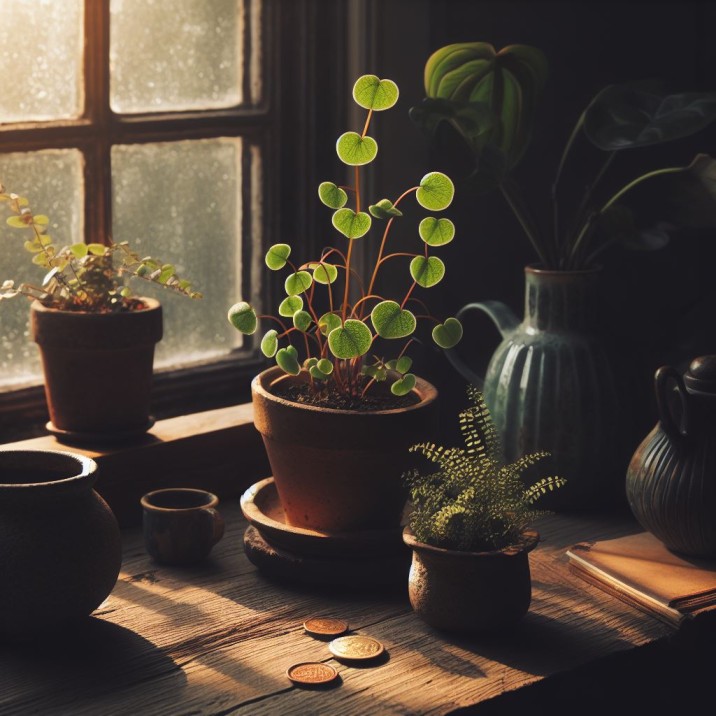
Flowering and Foliage
Baby Tears is distinguished by its delicate, vivid green leaves. This plant, while appreciated for its colourful foliage, also bears unnoticeable greenish-white blooms.
The plant’s rich, delicate foliage is its greatest draw, and indoor gardeners love it for both its lovely look and ease of maintenance.
Baby Tears plant Appearance
Little brilliant green leaves give the Baby Tears, sometimes called Baby Tears, a rich, delicate look. Its little size, which is around 0.5 inches (1.3 cm), gives indoor settings an alluring charm.
This plant is a well-liked option for individuals looking for a delicate, low-maintenance houseplant because of its exquisite leaves.
Overwintering
It’s easy to overwinter your Baby Tears, or Baby Tears plant. Bring it indoors to a warmer location with bright, indirect sunshine when the temps fall.
Reduce the amount of time between waterings and let the soil dry. Pests may be drawn indoors by the weather, so keep a watch out for them.

Common Pests
including other plants, Baby Tears is susceptible to common pests including mealybugs and spider mites. By sucking sap from the leaves of your beautiful plant, these microscopic invaders can cause damage.
Check your Pilea often for pests, and if you do, gently wash the afflicted parts with a soapy water solution or apply insecticidal detergent to preserve the health of your plant.
Plant Diseases
- Baby Tears plant may come into contact with typical indoor pests such as mealybugs and spider mites.
- Yellowing Leaves: Overwatering can cause root rot, which causes the leaves to become yellow.
- Preventive measures: Make sure to water your plant correctly, maintain humidity, and give your plant routine checks.
- Natural Solutions: Well-draining soil reduces root problems, while neem oil or insecticidal soap can help manage pests.
- Regular Upkeep: Keep a tight check on your plant to quickly identify and fix problems.
Problems and Solutions
Problem: Yellowing leaves due to overwatering.
Solution: To avoid root rot, let the soil somewhat dry out in between waterings.
Problem: Leggy growth and sparse appearance.
Solution: For a bushier, fuller appearance, trim stems and pinch back
Problem: Pest infestations (spider mites, mealybugs).
Solution:Apply insecticidal soap or neem oil and practise proper plant hygiene
Problem: Soil staying soggy.
Solution: Use well-draining soil mix to avoid waterlogged roots.
Toxicity of Pilea–depressa
For Human
Baby Tears plant, also known as Pilea-depressa, is often non-toxic to people. Enjoy this indoor plant without worrying about your health. Be cautious, though, as certain variations could be detrimental to cats and dogs, for the protection of your pets.
For Cats and Dogs
Pets like cats and dogs may experience injury from Baby Tears. Some variations contain ingredients that, if consumed, might make people feel unwell or uncomfortable.
Keep Pilea-depressa out of your animal companions’ reach and seek medical attention if they exhibit any strange symptoms to protect their safety.
Varieties/Types
Pilea-depressa ‘Baby Tears’: This traditional type is favoured by indoor gardeners because of its thin, rounded leaves and robust growth.
Pilea-depressa ‘Baby Tears Care’: Similar to the common Baby Tears, it requires a bit more care and does best in a terrarium.
Pilea-depressa ‘Bambino’: This variety brings a sense of elegance to any setting because to its elegant, vivid green leaves and small stature.
Pilea-depressa ‘Chocolate’: This species offers a distinctive variation on the traditional Baby Tears, distinguished by its eye-catching, dark chocolate-colored leaves.
Pilea-depressa ‘Cats’: This kind is a top pick for pet owners because it is non-toxic and assures the safety of your feline companions.
Pilea-depressa ‘Sao Paulo’: This species, which is native to the well-known Brazilian city, often has a somewhat distinct leaf pattern.
Uses of Baby Tears plant
- Pilea-depressa is a wonderful addition to interior areas, increasing aesthetics with its appealing look and vivid green foliage.
- Terrariums: It is the perfect plant for terrariums thanks to its tiny size and trailing growth, which results in a beautiful, miniature landscape.
- Air purification: By absorbing pollutants, Pilea-depressa, like many houseplants, helps to enhance the quality of the air.
- ‘Baby Tears’ and ‘Chocolate,’ two unusual types that give variety to collections, are why horticulture aficionados choose this plant.
- this plant is a well-liked option for considerate and aesthetically pleasing presents for friends and family.
- Due to its simplicity of maintenance and quick growth, it is used in botanical education to learn plant growth and propagation.
Baby Tears plant Info Guide: Keeping Your Plants Healthy and Happy
Caring for a Pilea-depressa plant involves several key steps to ensure its vitality and beauty. To care for this plant properly, you need to understand how often to water it, the suitable soil, and its light requirements. This plant thrives in bright, indirect sunlight and well-draining soil.
You can propagate Pileadepressa to grow more of these lovely varieties like Pilea-depressa baby tears, Pilea-depressa bambino, or even the unique Pilea-depressa chocolate. These varieties add diversity to your indoor garden. Additionally, it’s important to consider your pets when growing Baby Tears plant, as some variants may be toxic to cats.
You can always consult the internet for more information on Pilea-depressa care, whether you’re a seasoned plant enthusiast or just starting your journey into indoor gardening. Remember to keep these tips in mind to maintain a happy and healthy Pilea-depressa, whether in your terrarium or as a standalone houseplant.
Conclusion
Finally, Baby Tears plant flourishes when given the right care, which includes perfect lighting, moderate watering, and well-draining soil. It’s crucial to do maintenance tasks like trimming and comprehend propagation strategies.
With its lush, low-maintenance appearance, this lovely plant brightens up indoor areas, making it the ideal addition to your collection.
FAQs
What lighting conditions are ideal for Pilea depressa?
In direct, bright sunshine, this plant grows well. To avoid leaf burn, stay out of the direct sun.
How should you water Pilea depressa to keep it healthy?
Ensure that the soil is regularly wet but not soggy. To avoid overhydration, water when the top inch of soil seems dry.
What type of soil is best for Pilea depressa?
To avoid waterlogging, grow succulents or indoor plants in soil that drains properly.
What temperature range does Pilea depressa prefer?
Maintain a comfortable temperature between 65-75°F (18-24°C) for this tropical plant.
How can you ensure the right humidity for Pilea depressa?
By spraying the leaves or utilizing a nearby water tray, you may keep the humidity at a moderate to high level.
How often should you fertilize Pilea depressa?
During the spring and summer growing seasons, fertilize every four to six weeks with a balanced liquid fertilizer
What type of potting mix is suitable for Pilea depressa?
To prevent soggy roots, choose a well-draining potting mix made for succulents or indoor plants.

